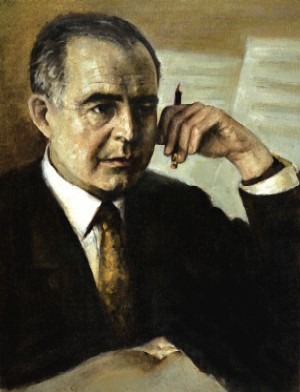
Mozart
Credit: http://www.straitstimes.com/
Pauer’s key characteristics for F major is that it is “at once full of peace and joy, but also expresses effectively a light, passing regret—a mournful, but not a deeply sorrowful feeling. It is, moreover, available for the expression of religious sentiment.”
One of the most apt arias for this key of such varied characteristics is Figaro’s aria ‘Se vuol ballare, Signor Contino,’ from Le Nozze di Figaro. Figaro has figured out the designs that Count Almaviva has on his wife-to-be, Susanna, and sings about how he will make all those plans come to naught. It’s a wonderful mix of the innocent dance melody at the beginning with the contrasting middle section where Figaro talks about turning all the Count’s schemes inside-out.
Mozart: Le Nozze di Figaro: Act I: Se vuol ballare, Signor Contin (Michele Pertusi, Figaro; Fiorentino Maggio Musicale Orchestra; Zubin Mehta, cond.)
To pick up the ideas of peace and joy, we can turn to Beethoven’s Sixth Symphony. Its title, the Pastoral, isn’t all about the peace and joy of the countryside, there’s also the terrible storm in the fourth movement (F minor – a harrowing key). The fifth movement in F major, entitled ‘Shepherd’s Song: Happy and Thankful Feelings after the Storm’ carries those elements that Pauer noted: peace and joy, but with some sorrow in the lines.
Beethoven: Symphony No. 6 in F major, Op. 68, “Pastoral”: V. Shepherd’s Song: Happy and Thankful Feelings after the Storm: Allegretto (Philharmonia Orchestra; Herbert von Karajan, cond.)
Many of Beethoven’s major works were in F major. Along with Symphony No. 6, there’s also Symphony No. 8, 2 string quartets, and 2 piano sonatas, among others. If we’re looking at Beethoven, we should also look at Brahms.
Brahms’ Symphony No. 3 in F major from 1883 was considered by the critic Eduard Hanslick as…”the most perfect” of his symphonies. The entire symphony is built around the notes F–A-flat–F which to Brahms meant “Free but happy.” And so we hear that freedom and happiness in his opening movement, but as Pauer noted, there’s still that element of sadness here.
Brahms: Symphony No. 3 in F major, Op. 90: I. Allegro con brio – Un poco sostenuto (Chicago Symphony Orchestra; Georg Solti, cond.)
It’s not pure peace and joy, that might be too sweet, but it’s peace and joy and melancholy. The thoughtfulness that lies behind today’s happiness, perhaps.
What pieces do you think should be added here? Keep in mind that the piece should date from before 1876, when Pauer’s book was published. Another guideline might be to note the relatively small list of composers he gave as examples: Haydn, Mozart, Beethoven, Mendelssohn, Schubert Rossini, Weber, and Spohr – all stalwarts of German classicism / romanticism.







